Description
GCL Liner Parameter
| Projects/ Technical data | Specifications | ||
| GCL-NP | GCL-OF | GCL-AH | |
| Weight per unit area(g/m2) | ≥4000g/m2 | ≥4000g/m2 | ≥4000g/m2 |
| Bentonie swell index(ml/2g) | ≥24 | ≥24 | ≥24 |
| Ethylene blue absorption(g/100g) | ≥30 | ≥30 | ≥30 |
| Tensile strength (N/100mm) | ≥600 | ≥700 | ≥600 |
| Racking strength(N/100mm) (for nonwovwn and woven fabric) | ≥40 | ≥40 | – |
| Racking strength(N/100mm) (for HDPE films and nonwoven fabric) | ≥30 | ≥30 | – |
| Permeability(m/s) | ≤5.0×110^(-11) | ≤5.0×110^(-11) | – |
| Anti-static water pressure | 0.4Mpa,1h, not seepage | 0.6Mpa,1h,not seepage | 0.6Mpa,1h,not seepage |
| Filtration loss (ml) | ≤18 | ≤18 | ≤18 |
| Bentonite durability (ml/2g) | ≥20 | ≥20 | – |
QIVOC provides professional customization services as an experienced geosynthetic clay liner manufacturer. If you need a customized product, please tell us your needs directly and QIVOC will provide you with the price of the bentonite liner with cost-effective solutions.
Width: According to customer requirements
Length: According to customer requirements
Minimum order quantity: 1SQM
Payment method: LC, T/T, Western Union
Supply capacity: 90,000 square meters/day
Delivery time: 7-15 days
Conventional packaging: Geosynthetic clay liner roll packaging woven bag or according to your requirements.
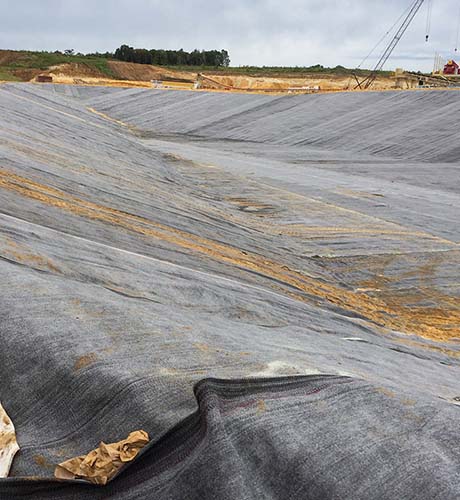
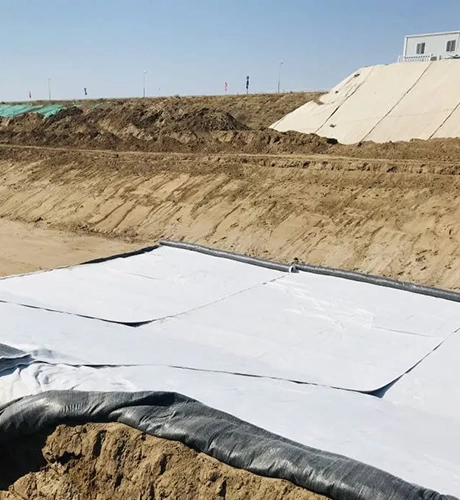
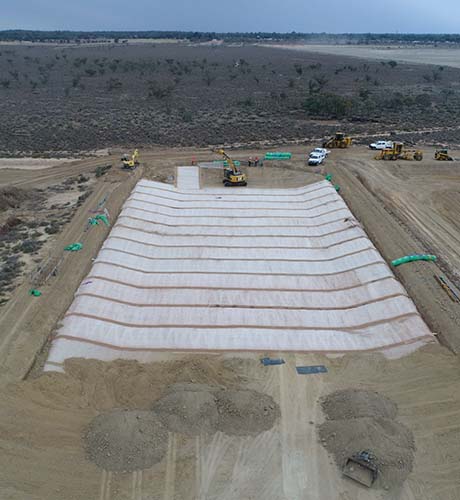
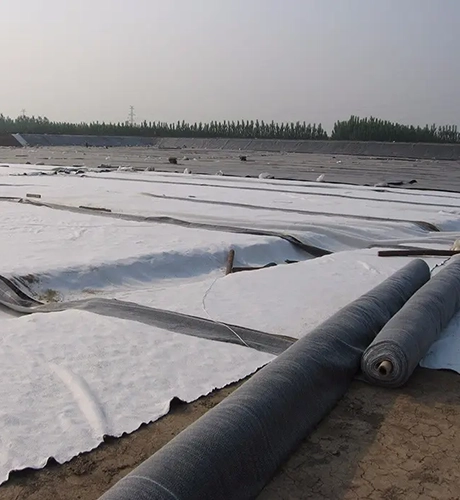
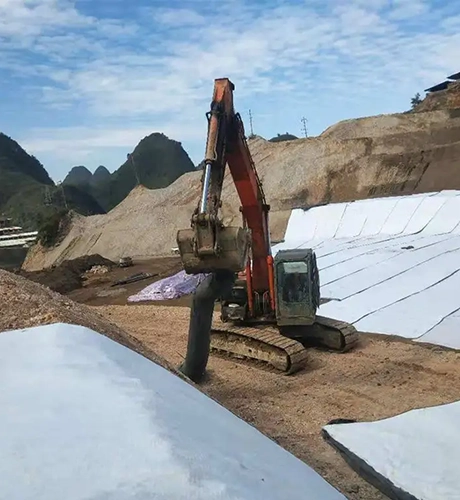
Geosynthetic Liner Advantages
As a geosynthetic clay liner manufacturer with 20 years of experience, we take pride in the following advantages of our products:
- Water Retention Performance: Sodium bentonite clay liner forms a high-density diaphragm under water pressure. At a thickness of approximately 3mm, its water permeability is less than 1×10ˉ¹¹m/sec, equivalent to 100 times the density of clay with a thickness of 30cm, showcasing robust self-retaining water properties.
- Permanent Waterproof Properties: Due to its natural inorganic composition, sodium bentonite geo clay liner exhibits permanent waterproofing qualities. It remains unaffected by aging, corrosion, or environmental changes over time, ensuring long-lasting waterproof performance.
- Easy Construction: Compared to other waterproof materials, construction with sodium bentonite geosynthetic clay is relatively simple and does not require heating or pasting. Connection and securing are achieved using bentonite powder, nails, washers, etc. No special inspection is needed post-construction, and any identified waterproofing defects are easily repairable. Additionally, bentonite clay liner boast the shortest construction period among existing waterproof materials.
- Not Affected by Temperature: Sodium bentonite liner does not become brittle in cold climates, allowing construction even at temperatures as low as -20°C, where traditional waterproofing materials might be impractical. Furthermore, construction on wet base layers without open water is feasible.
- Integration of Waterproof Materials and Objects: When sodium bentonite gcl clay liner comes into contact with water, it expands 20-28 times its original volume. This unique property enables geotextile clay liner to repair cracks on concrete surfaces within 2mm, even in the presence of vibrations or settling in the concrete structure.
- Green: Bentonite, being a natural inorganic material, is harmless to the human body and poses no significant impact on the environment. Its excellent environmental performance contributes to its overall green and eco-friendly attributes.
Geo Clay Liner Applications & Uses
Due to its exceptional waterproof performance and effective anti-penetration capabilities, geo clay liners find widespread applications across various fields, including construction, environmental engineering, and industrial projects.
- Construction Engineering Field: Geocomposite clay liners are extensively used in construction projects for waterproofing treatments on roofs, basements, foundations, tunnels, subways, and other structures. Their strong waterproofing abilities contribute to the longevity and structural integrity of these constructions.
- Environmental Engineering Field: In the realm of environmental engineering, bentonite geosynthetic clay liners play a crucial role in applications such as landfills, sewage treatment sites, and sewage leachate treatment facilities. They effectively prevent pollutants and wastewater from seeping into the soil, thereby safeguarding the water quality and ecology of the surrounding environment.
- Industrial Engineering Field: Within industrial engineering, gcl geosynthetic clay liners are employed in locations like chemical plants, power plants, oil depots, and other industrial sites. These liners act as a protective barrier, preventing the leakage of chemicals, fuels, oil, and other potentially harmful substances into the soil. This not only ensures the safety of the surrounding environment but also protects valuable groundwater resources from contamination.
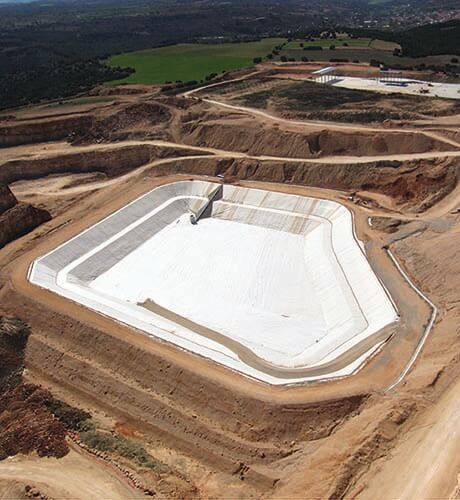

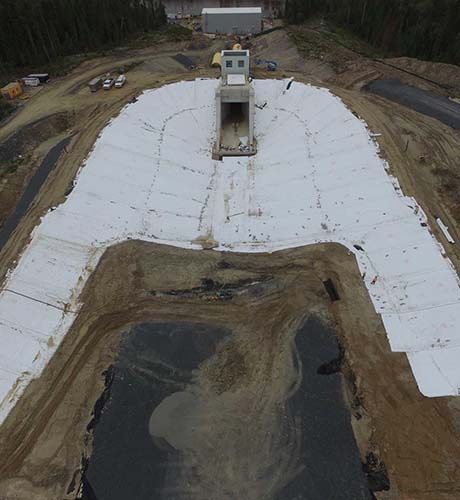
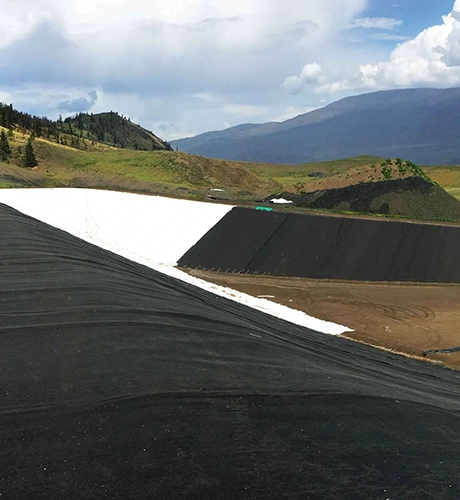

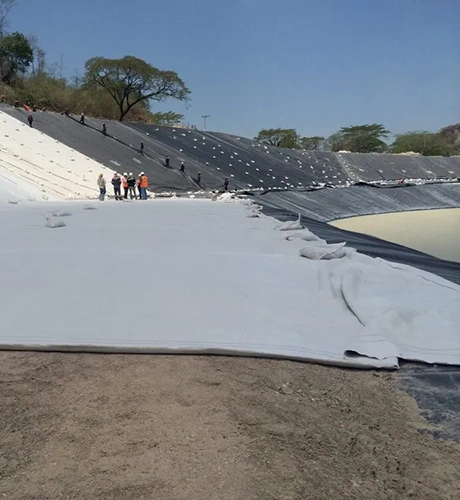
“Have a question? Click the button below to reach out to us directly for personalized support. ”
Rest assured, we’ll respond to your inquiry within 2 hours.
Bentonite Clay Liner Installation Procedures
Using and installing the bentonite clay liner is straightforward and convenient. Below is a standard construction process.
Base Surface Requirements for Bentonite Waterproof Blanket Laying:
- The base layer should be compact and smooth, devoid of pits, water, stones, tree roots, and other sharp objects. The cleaned slope surface must be flat, dense, and smooth, meeting the necessary flatness requirements for laying the geosynthetic clay liner.
- If water is present on the ground, drainage work must be conducted as a priority. During foundation treatment, the compaction degree of the plain soil should not be less than 85%.
- In the presence of moisture on the ground, drainage measures should be implemented before laying to prevent the premature hydration of the waterproof blanket.
- The gcl liner should have overlaps of no less than 15cm for the main part and 25cm for the edge. Fixation can be achieved with nails (bamboo nails are also suitable) and washers at intervals of 30cm.
- After the construction of the geosynthetic liner, construction workers must exercise caution to prevent damage to the bentonite liner.
- To prevent early hydration due to rain, lay a 3-5cm thick cement mortar after cushion construction. This layer acts as a barrier, preventing the waterproof layer from coming into contact with water and causing premature hydration.
Weather Requirements for Laying Geosynthetic Clay Liners:
- The temperature should generally be maintained above ten degrees Celsius.
- Preferably, the wind force should be below Level 4.
- In instances of excessively low temperatures, it is generally not recommended to conduct construction and laying activities. Additionally, it is advisable to avoid strong winds exceeding Level 4 and inclement weather such as rain and snow.
- In the presence of windy weather impacting the laying of the clay liner, the liners to be laid should be firmly pressed using sandbags to counter the effects of the wind. This ensures proper placement and prevents disruption during the laying process.
Geotextile Clay Liner Construction Method:
- Utilize mechanical construction for laying; however, manual laying is also acceptable. Lay the blanket in blocks according to the prescribed order and direction.
- Ensure that the joints between two blankets are staggered, and avoid forming continuous joints. The overlapping surface should be free of sand, water, or other impurities that may affect the quality.
- When cutting, follow the construction size specifications. The blanket can be laid both horizontally and vertically based on the requirements.
- During the laying of the waterproof mat, ensure that all joints are overlapped. Sprinkle bentonite dry powder (bentonite clay) on the joints at a rate of 400 grams per square meter.
- If the joint width exceeds 30 cm and the waterproof pad is damaged, promptly cover and repair it using bentonite dry powder (bentonite clay) or geo clay liner and bentonite dry powder. Enlarge the damaged area by more than 15cm for effective repair.
- Process the edge parts according to the requirements of overlap. On steep slopes, use rivets to fix the blanket and prevent sliding.
- When constructing the connection between the bentonite clay liner and pipeline equipment, pour concrete at the bottom of the pipeline to prevent through-pipe shaking. Fill gaps around the pipeline with bentonite powder, then thoroughly seal. Secure the waterproof pads around the pipes tightly with thin iron wire.
Sealing Method of Geocomposite Clay Liner:
When securing two bentonite liner with a 30 cm overlap, use the following sealing method:
- Apply bentonite powder to the horizontal overlapping joints of the bentonite blanket. The recommended dosage is 500 grams per meter.
- Use a mixture of bentonite powder and water, known as bentonite mud, at the vertical overlapping joints of the gcl clay liner. This mixture replaces bentonite powder in this specific application.
Anchorage Method of Bentonite Geosynthetic Clay Liner:
For effective anchorage, it is advisable to employ the trench anchoring method:
- Create a trench 40 cm away from the construction plane, with a trench width of 4 cm and a trench depth of 40 cm.
- Pull the waterproof blanket into the U-shaped trench and securely fix it using sandbags or soil.
- When laying the blanket on facades and slopes, use pins and gaskets to prevent sliding.
- Fix overlapping parts and edges of the waterproof mat with steel nails. Additionally, the entire geotextile clay liner should be nailed in the middle based on flatness considerations.
Precautions for Installation of GCL Clay Liner
While the construction of geocomposite clay liner is relatively simple, attention to the following considerations is crucial during installation. Here are specific precautions for geosynthetic clay liner installation:
- Ensure that the storage and transportation of bentonite composite waterproof mats are carried out in a waterproof and moisture-proof manner, and protection from strong sunlight is essential. During storage, elevate the mats using an overhead method. Mats transported to the site should be used on the same day.
- Once a process is completed or during the construction of adjacent projects, take proper measures to protect the bentonite geosynthetic clay liner. Avoid any man-made damage during these phases.
- Avoid wearing spiked shoes or high heels when stepping on the gcl geosynthetic clay liners. Vehicles and machinery must not run over the mat to prevent damage.
- In the construction of the GCL composite liner, ensure that the construction of the HDPE film or the laying of a 300mm thick clay protective layer on the completed geosynthetic clay liner is completed on the same day. If these activities cannot be completed on the same day, cover the gcl liner to prevent hydration due to rain, snow, or strong sunlight that may cause damage.
- After completing the construction and obtaining acceptance for the geosynthetic liner single-layer liner in anti-seepage and waterproof construction projects, promptly backfill with soil, sand, or stone particles with a specific gravity greater than 2.0. To prevent damage during backfilling, ensure that the backfill soil does not contain gravel with a particle size greater than 10mm. The thickness of the backfill soil should not be less than 30cm. Additionally, the backfill soil should be graded and compacted, with a compaction degree not less than 85%.
This article contains more detailed explanations.
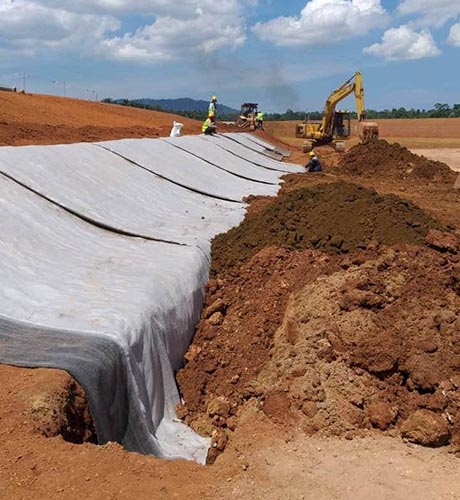
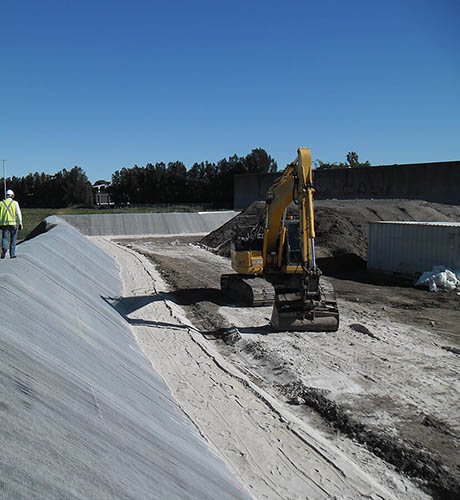
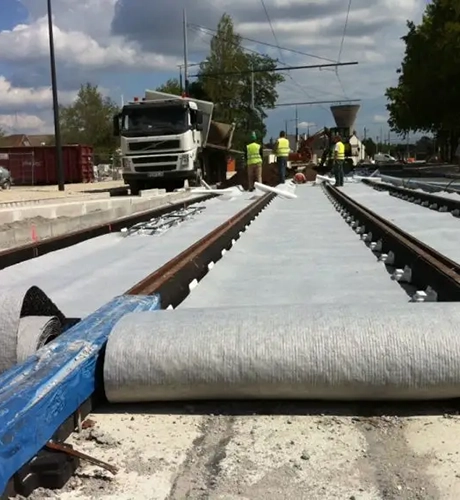
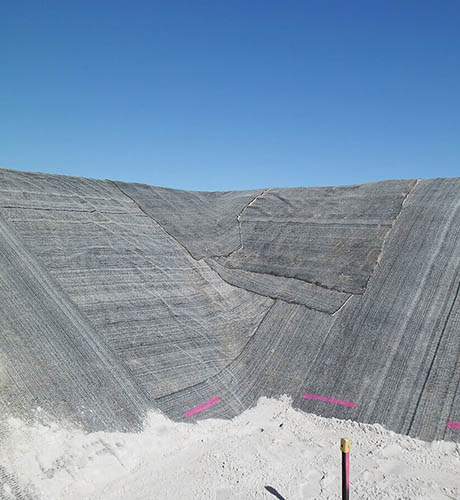

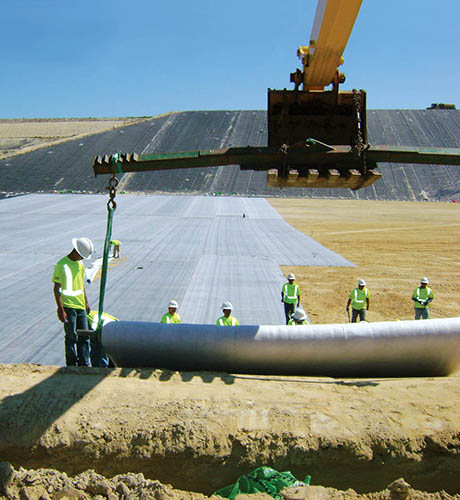
Recent Projects
Discover our recent client projects and explore the range of tailored, personalized support we provide. Share your requirements and receive the ideal solution.

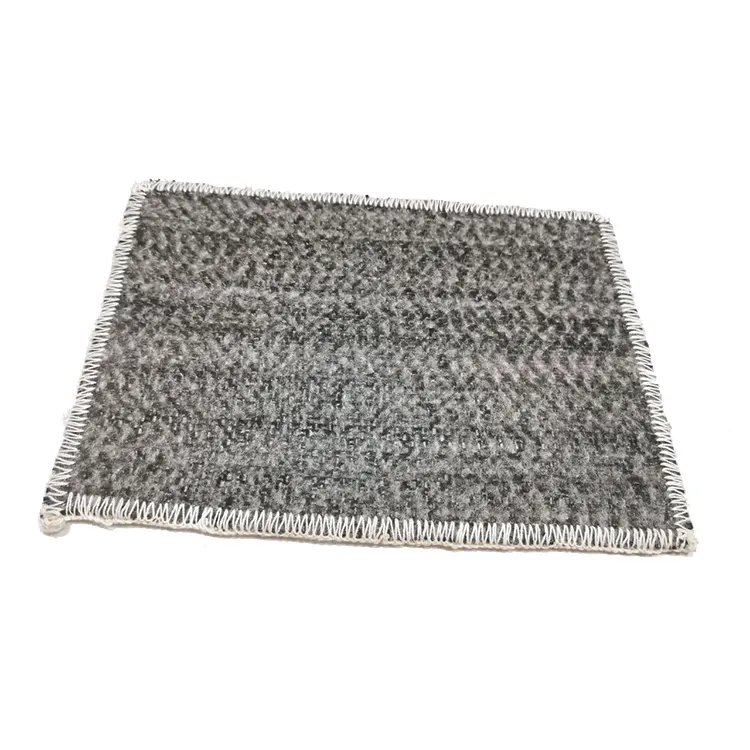
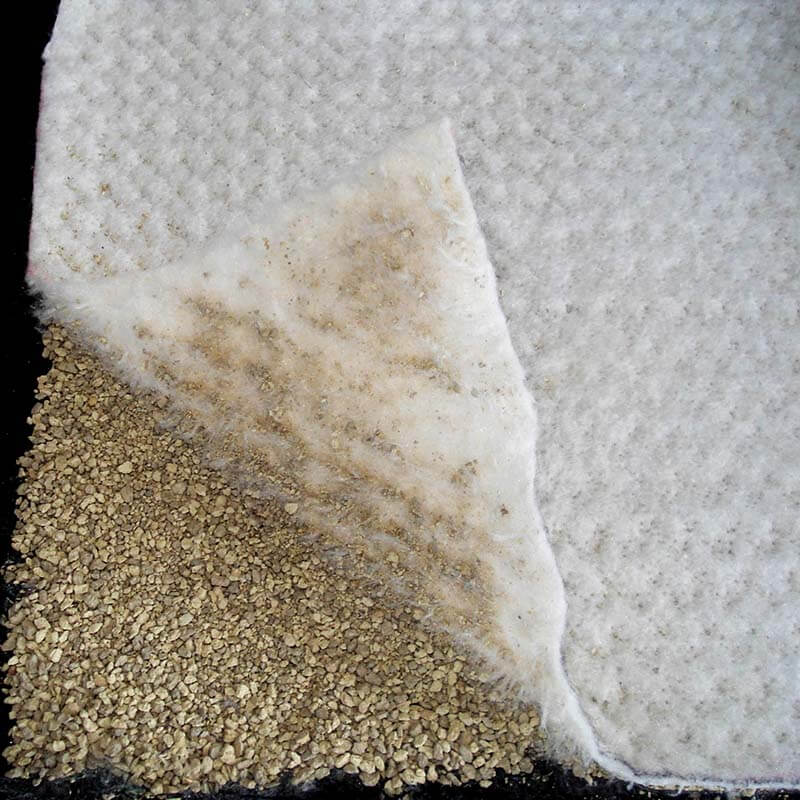
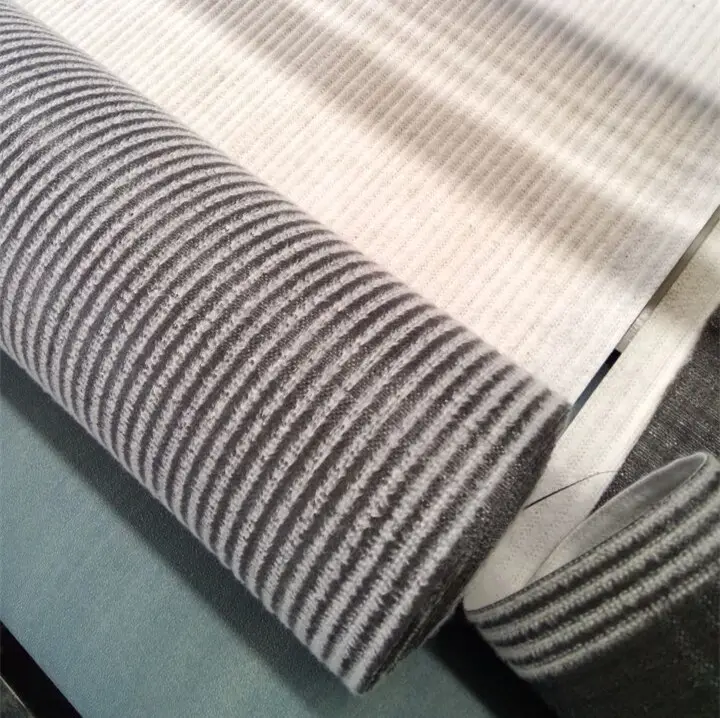
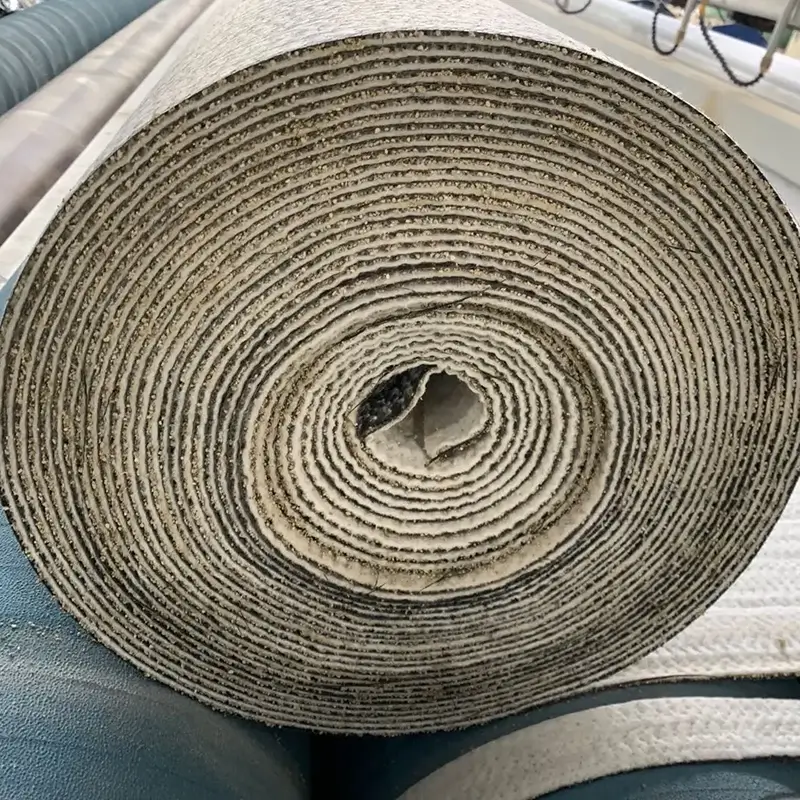


Reviews
There are no reviews yet.